13 Bizarre Things That Washed Up on Beaches
Dredged from the depths
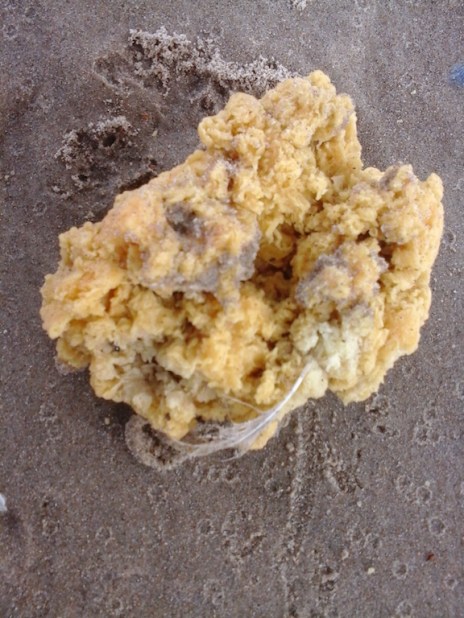
Take a stroll on a beach and you're likely to encounter plentiful evidence of life from the ocean amid the flotsam: stray clumps of seaweed, colorful seashells, even the occasional crustacean or jellyfish.
But sometimes what washes up on a beach is much harder to identify. Perhaps the object is partly decomposed, or represents a species of marine animal or plant rarely glimpsed on land. Or maybe its condition raises questions about previously unknown relationships or behaviors of ocean creatures, or offers hints about unusual ocean dynamics.
Here are some intriguing examples of mysterious and peculiar emissaries from the sea, which remind us that there is much to be discovered about life in the oceans' depths.
Waxy clumps

Qu'est-ce-que c'est? Beginning on July 14, several French beaches in the north of the country experienced a new type of visitor — thousands of yellow, clumpy masses that arrived with the tide and defied identification, though reports indicated that they smelled faintly of paraffin.
An estimated several tons of the waxy objects were observed on shores and along 37 miles (60 kilometers) of French coastline, and they might represent a by-product of hot grease in boat exhaust, according to the organization Sea-Mer Association, which is supervising the clean-up.
"Sea pickles"
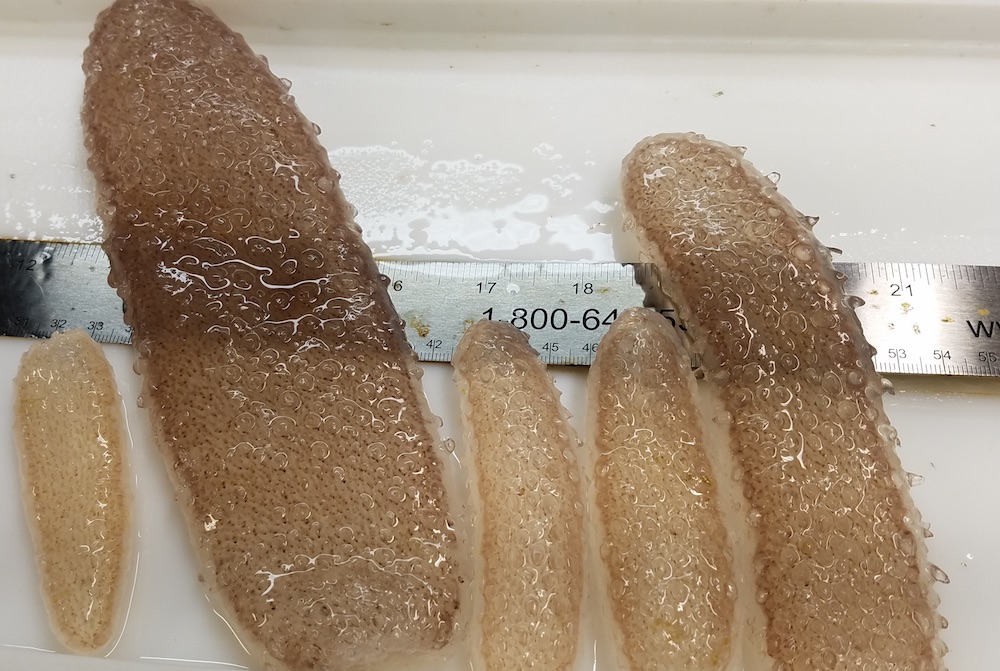
Gelatinous, translucent, bumpy-skinned oblong sea creatures called pyrosomes have recently taken up residence in waters along the Pacific coastline of the U.S., congregating in the millions and washing up on beaches — and no one knows why.
The so-called "sea pickles" are generally found in more tropical waters, and it is uncertain what triggered their unusual population explosion in 2017, representatives of the National Oceanic and Atmospheric Association said in a statement.
Get the world’s most fascinating discoveries delivered straight to your inbox.
A modern "sea monster"
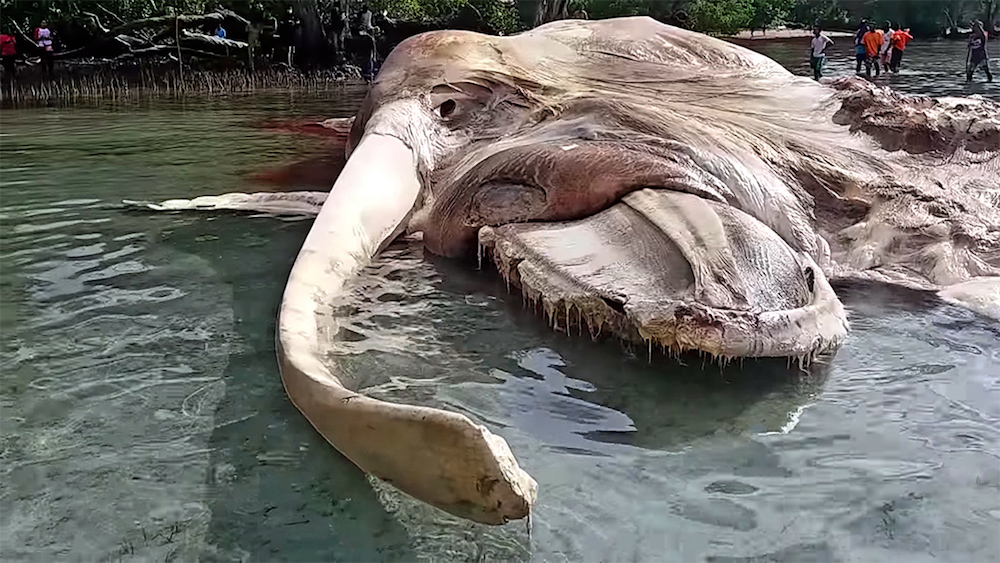
Gooey masses of decomposing flesh that wash up on beaches can be particularly challenging to identify. In May, residents of Seram Island, Indonesia were treated to the sight of a beached boat-sized creature dripping with red fluid and with parts of its body inflated by quantities gas-producing bacteria.
However, scientists explained that the creature was a type of baleen whale, pointing out noticeable grooves in its head area and the presence of visible plates that once held rows of brushy baleen filters.
Massive ice balls
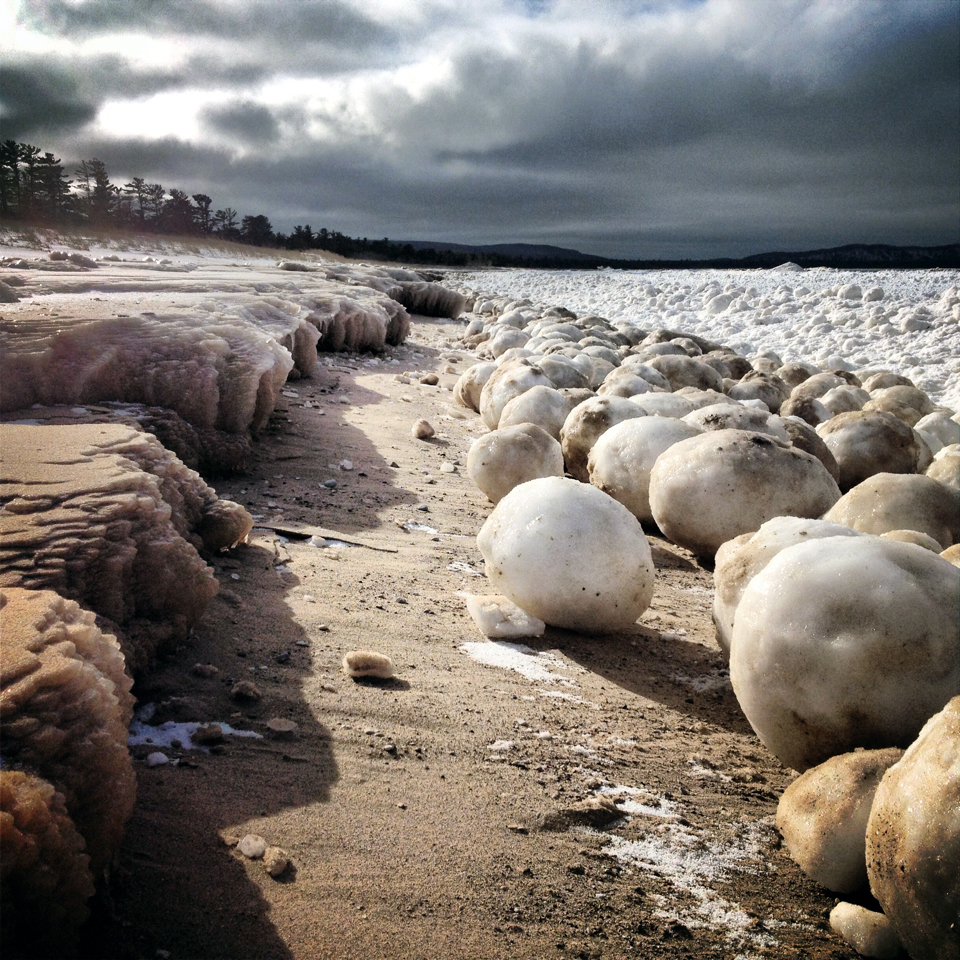
Hefty ice spheres as big as basketballs and weighing as much as 50 pounds (22 kilograms) clustered along the northeastern coast of Lake Michigan in 2013.
Ice balls like these begin as bits of slush and ice crystals, shaped by the rolling motion of waves close to shore. They are commonly glimpsed in the area during the winter months, but they rarely grow this large, according to Tom Ulrich, deputy superintendent for the park where the icy lumps were found.
Where's the liver?

A series of gruesome marine "crime scenes" played out on South African beaches in May and June, when scientists discovered the ragged remains of four great white sharks that were missing their livers.
Orcas emerged as the prime suspects, as they are known to occasionally prey on great whites, and livers — along with other internal organs — are a "sweet spot" for predators, a marine biologist told Live Science.
Enormous ovaries

When a deep-sea oarfish measuring 13.5 feet (4 meters) in length washed up on Catalina Island in California on June 1, 2015, it offered scientists the rare opportunity to take a closer look at the elusive fish's biology.
Because oarfish live in ocean depths, there is much about their anatomy and behavior that is unknown, and teams of scientists jumped at the chance to study the animal's skeleton, muscles, feeding structures and reproductive system — which included 7-foot-long ovaries.
Dinosaur femur
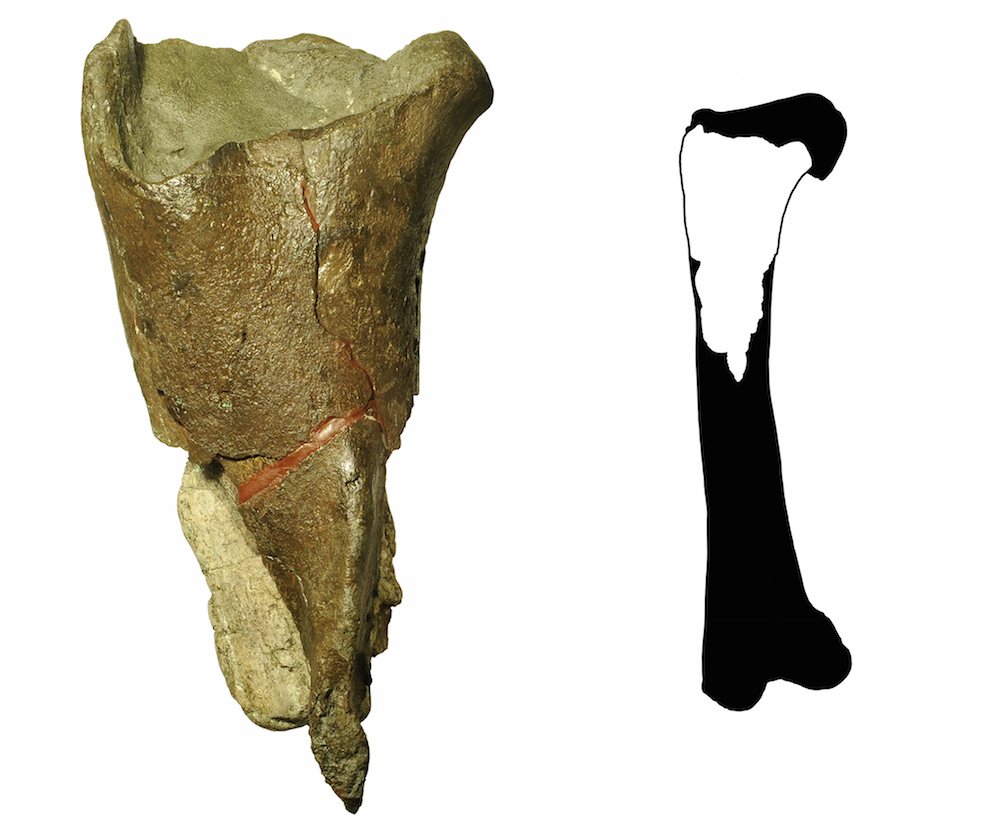
Part of an 80-million-year-old fossil thighbone found embedded in marine rock in Washington's San Juan islands provided the first evidence that dinosaurs once roamed the state.
Paleontologists discovered the femur while looking for fossilized signs of other extinct animals, and the rock was so hard that it took an entire day to pry the fossil out. Though it is unclear what species of dinosaur the bone belonged to, the scientists eventually identified it as a theropod — a type of meat-eating dinosaur — in a study published in 2015 in the journal PLOS ONE.
Blue "sailors"
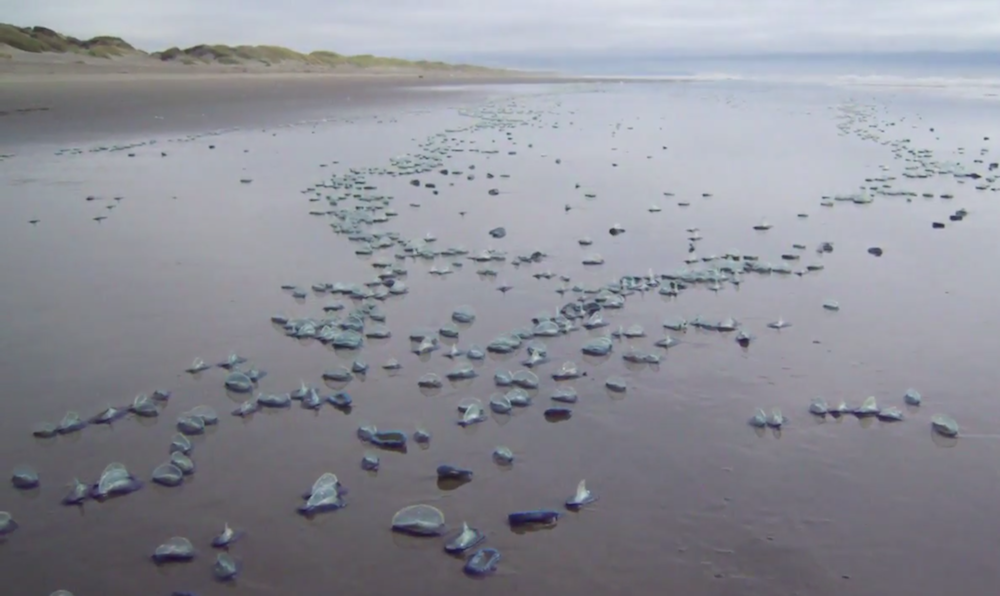
In 2014, beachgoers on the western coast of the United States were confronted by millions of squishy blue animals resembling jellyfish — but each was topped with a rigid structure resembling a sail.
Each of these tiny organisms, called "by-the-wind sailors," measurs about 2.75 inches (7 centimeters) in length. They typically inhabit the open ocean, preferring warm waters in locations around the world. But every few years, storm activity can sweep them toward coastal regions, where they pile up on beaches in enormous quantities — in 2009 or 2010, dead and dying sailors accumulated on a California beach to a depth of several feet, an oceanographer told Live Science in 2014.
Purple blob

On July 13, a Reddit user shared photos of a peculiar, lumpy object on a California beach that resembled "an organ," according to the photographer.
Images of the fleshy object, which was estimated to be 5 inches (13 centimeters) in length showed bulbous purplish regions — likely its protruding gut — on a partly-decomposed body bisected by a long furrow, with black markings along one side. The puzzling creature's identity was difficult to pinpoint, and marine biologists told Live Science that it could be a type of sea slug (pictured here) or a limpet.
Junk science
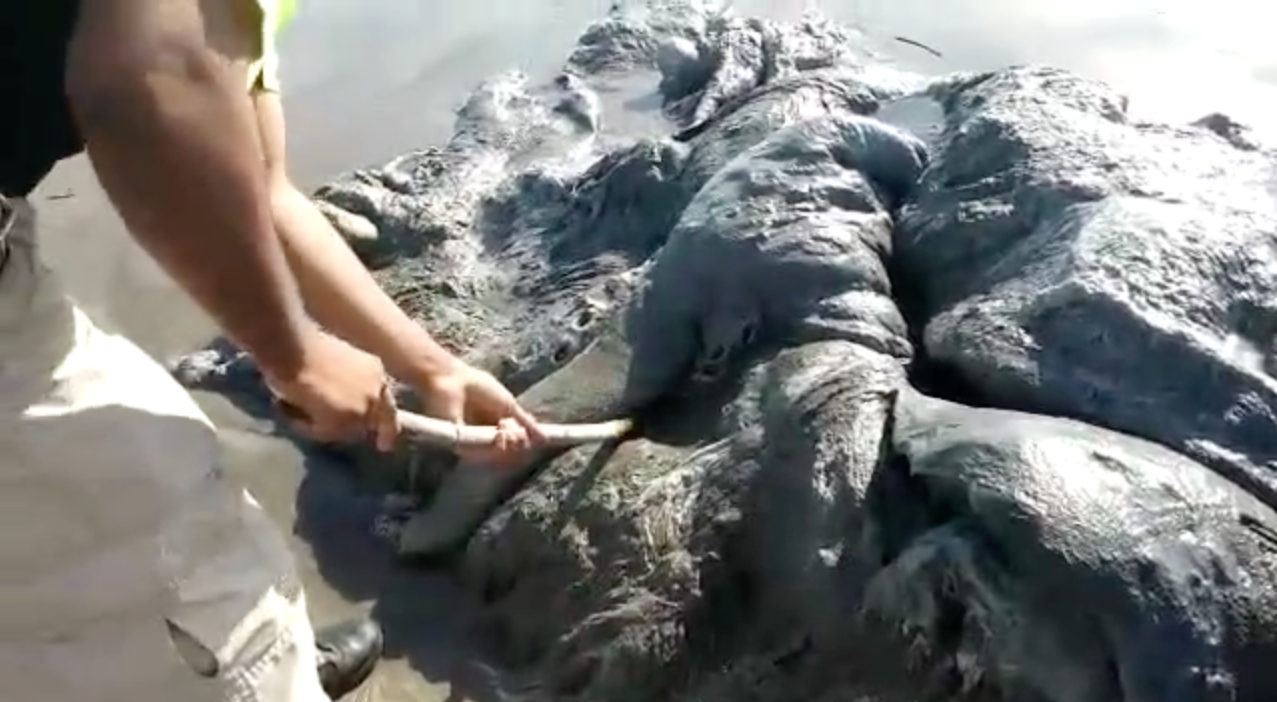
Perplexed officials and bystanders in Mexico were stymied by a massive, shapeless jumble of pulpy, greyish flesh in 2016, after it washed ashore on an Acapulco beach.
With a little imagination, the remains could perhaps be attributed to a fantastic sea monster. But experts explained that mystery masses such as this one are the decaying heads of sperm whales, made of deflated flesh from the upper part of the head and the mass of connective tissue known as "the junk," from the lower part of the head.

Mindy Weisberger is a science journalist and author of "Rise of the Zombie Bugs: The Surprising Science of Parasitic Mind-Control" (Hopkins Press). She formerly edited for Scholastic and was a channel editor and senior writer for Live Science. She has reported on general science, covering climate change, paleontology, biology and space. Mindy studied film at Columbia University; prior to LS, she produced, wrote and directed media for the American Museum of Natural History in NYC. Her videos about dinosaurs, astrophysics, biodiversity and evolution appear in museums and science centers worldwide, earning awards such as the CINE Golden Eagle and the Communicator Award of Excellence. Her writing has also appeared in Scientific American, The Washington Post, How It Works Magazine and CNN.


